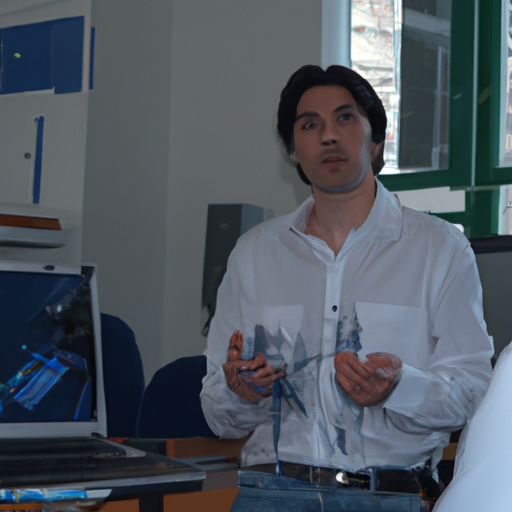What components and modules does software testing include?
What Components and Modules Does Software Testing Include?
I. Introduction
In the fast-paced world of software development, ensuring the quality and reliability of applications is paramount. Software testing is a critical process that helps identify defects, validate functionality, and ensure that software meets specified requirements. It encompasses a variety of components and modules that work together to deliver a robust testing framework. This blog post will explore the essential components and modules of software testing, highlighting their significance in the software development lifecycle.
II. Key Components of Software Testing
A. Test Planning
Test planning is the foundational step in the software testing process. It involves defining the objectives of testing, developing a test strategy, and allocating resources effectively.
1. **Objectives of Test Planning**: The primary goal is to outline what needs to be tested, the scope of testing, and the criteria for success. This ensures that all stakeholders have a clear understanding of the testing process.
2. **Test Strategy Development**: A well-defined test strategy outlines the testing approach, including the types of testing to be performed, the tools to be used, and the overall testing methodology.
3. **Resource Allocation**: Effective resource allocation involves assigning roles and responsibilities to team members, ensuring that the right skills are matched with the appropriate tasks.
B. Test Design
Once the planning phase is complete, the next step is test design, which focuses on creating detailed test cases and preparing the necessary data and environment.
1. **Test Case Development**: Test cases are the backbone of the testing process. They outline specific conditions under which a test will be executed, including input data, execution steps, and expected outcomes.
2. **Test Data Preparation**: Preparing test data is crucial for executing test cases effectively. This may involve creating new data or using existing data while ensuring it meets the requirements of the test cases.
3. **Test Environment Setup**: A proper test environment mimics the production environment to ensure that tests yield accurate results. This includes configuring hardware, software, and network settings.
C. Test Execution
Test execution is where the actual testing takes place. It can be performed manually or through automated processes.
1. **Manual Testing**: In manual testing, testers execute test cases without automation tools. This approach is often used for exploratory testing, usability testing, and scenarios that require human judgment.
2. **Automated Testing**: Automated testing involves using software tools to execute test cases. This method is efficient for repetitive tasks and regression testing, allowing for faster feedback and increased test coverage.
3. **Performance Testing**: Performance testing assesses how a system performs under various conditions, including load, stress, and scalability testing. This ensures that the application can handle expected user traffic and data volume.
D. Defect Tracking and Management
Defect tracking and management are essential for maintaining software quality. This component involves identifying, reporting, and resolving defects.
1. **Defect Identification**: During testing, any discrepancies between expected and actual results are logged as defects. This process requires careful attention to detail to ensure that all issues are captured.
2. **Defect Reporting**: Once identified, defects are documented in a defect tracking system. This documentation includes details such as severity, status, and steps to reproduce the issue.
3. **Defect Resolution Process**: The resolution process involves developers fixing the defects and testers verifying the fixes. This iterative process ensures that defects are addressed promptly and effectively.
E. Test Closure
The test closure phase wraps up the testing process and provides insights for future projects.
1. **Test Summary Report**: A test summary report consolidates the results of the testing process, including the number of test cases executed, passed, failed, and any outstanding defects.
2. **Lessons Learned**: Reflecting on the testing process helps identify what worked well and what could be improved. This knowledge is invaluable for future projects.
3. **Process Improvement**: Continuous improvement is a key aspect of software testing. By analyzing past projects, teams can refine their testing processes and methodologies.
III. Testing Modules
Software testing can be categorized into several modules, each serving a specific purpose in the testing lifecycle.
A. Unit Testing
1. **Definition and Purpose**: Unit testing involves testing individual components or modules of the software to ensure they function correctly in isolation. This is typically the first level of testing performed.
2. **Tools and Frameworks**: Popular tools for unit testing include JUnit for Java, NUnit for .NET, and pytest for Python. These frameworks provide a structured approach to writing and executing unit tests.
B. Integration Testing
1. **Definition and Purpose**: Integration testing focuses on verifying the interactions between integrated components or systems. It ensures that combined parts work together as intended.
2. **Types of Integration Testing**: There are several types of integration testing, including top-down, bottom-up, and sandwich (hybrid) approaches, each with its own advantages and use cases.
C. System Testing
1. **Definition and Purpose**: System testing evaluates the complete and integrated software system to verify that it meets specified requirements. This level of testing assesses the system's compliance with functional and non-functional requirements.
2. **Types of System Testing**: System testing can include functional testing, performance testing, security testing, and usability testing, among others.
D. Acceptance Testing
1. **Definition and Purpose**: Acceptance testing determines whether the software meets the acceptance criteria set by stakeholders. It is often the final phase of testing before the software is released.
2. **User Acceptance Testing (UAT)**: UAT involves end-users testing the software in a real-world environment to ensure it meets their needs and expectations.
E. Regression Testing
1. **Definition and Purpose**: Regression testing ensures that new code changes do not adversely affect existing functionality. It is crucial for maintaining software quality during ongoing development.
2. **Importance in Continuous Integration/Continuous Deployment (CI/CD)**: In CI/CD environments, regression testing is automated to provide rapid feedback on code changes, ensuring that the software remains stable and functional.
IV. Testing Techniques
Software testing employs various techniques to ensure comprehensive coverage and effective defect detection.
A. Black Box Testing
1. **Definition and Characteristics**: Black box testing focuses on testing the software's functionality without knowledge of its internal code structure. Testers evaluate inputs and outputs based on requirements.
2. **Advantages and Disadvantages**: This technique is user-centric and helps identify discrepancies between expected and actual behavior. However, it may miss internal defects.
B. White Box Testing
1. **Definition and Characteristics**: White box testing involves testing the internal logic and structure of the code. Testers have access to the source code and can design tests based on code paths.
2. **Advantages and Disadvantages**: This technique allows for thorough testing of internal logic but requires a deep understanding of the code, making it more time-consuming.
C. Gray Box Testing
1. **Definition and Characteristics**: Gray box testing combines elements of both black box and white box testing. Testers have partial knowledge of the internal workings of the application.
2. **Advantages and Disadvantages**: This approach allows for more effective testing by leveraging both functional and structural knowledge, but it may still miss some internal defects.
V. Testing Tools and Technologies
The software testing landscape is enriched by various tools and technologies that enhance the testing process.
A. Test Management Tools
Test management tools help organize and manage the testing process. Examples include Jira, TestRail, and Zephyr, which offer features for test case management, defect tracking, and reporting.
B. Automated Testing Tools
Automated testing tools streamline the testing process by executing test cases automatically. Popular tools include Selenium for web applications, Appium for mobile testing, and TestComplete for desktop applications.
C. Performance Testing Tools
Performance testing tools assess the responsiveness and stability of applications under load. Examples include JMeter, LoadRunner, and Gatling, which simulate user traffic and measure performance metrics.
D. Continuous Testing Tools
Continuous testing tools integrate testing into the CI/CD pipeline, enabling rapid feedback on code changes. Tools like Jenkins, CircleCI, and Travis CI facilitate automated testing and deployment.
VI. Best Practices in Software Testing
To achieve effective software testing, teams should adhere to best practices that promote quality and efficiency.
A. Early Testing
Incorporating testing early in the development process helps identify defects sooner, reducing the cost and effort required to fix them.
B. Continuous Testing
Continuous testing ensures that testing is an ongoing process throughout the software development lifecycle, providing timely feedback and maintaining software quality.
C. Test-Driven Development (TDD)
TDD is a development approach where tests are written before the code. This practice encourages better design and ensures that code meets requirements from the outset.
D. Behavior-Driven Development (BDD)
BDD focuses on collaboration between developers, testers, and business stakeholders to define the behavior of the software. This approach enhances communication and ensures that the software meets user needs.
E. Collaboration and Communication
Effective collaboration and communication among team members are essential for successful testing. Regular meetings, updates, and feedback loops foster a culture of quality.
VII. Challenges in Software Testing
Despite its importance, software testing faces several challenges that can impact its effectiveness.
A. Complexity of Software Systems
Modern software systems are often complex, making it challenging to test all components thoroughly. This complexity can lead to missed defects and increased testing time.
B. Time Constraints
Tight deadlines can pressure testing teams to rush through the testing process, potentially compromising quality. Balancing speed and thoroughness is a constant challenge.
C. Resource Limitations
Limited resources, including personnel and tools, can hinder the testing process. Organizations must prioritize testing efforts and allocate resources effectively.
D. Evolving Requirements
Changing requirements during the development process can complicate testing efforts. Test cases may need to be updated frequently to align with new specifications.
VIII. Conclusion
In conclusion, software testing is a multifaceted process that encompasses various components and modules, each playing a vital role in ensuring software quality. From test planning and execution to defect management and closure, each aspect contributes to a comprehensive testing strategy. As software development continues to evolve, so too will the practices and tools used in testing. Embracing best practices and addressing challenges will be essential for organizations striving to deliver high-quality software in an increasingly competitive landscape. Comprehensive testing is not just a phase; it is a continuous commitment to excellence in software development.















